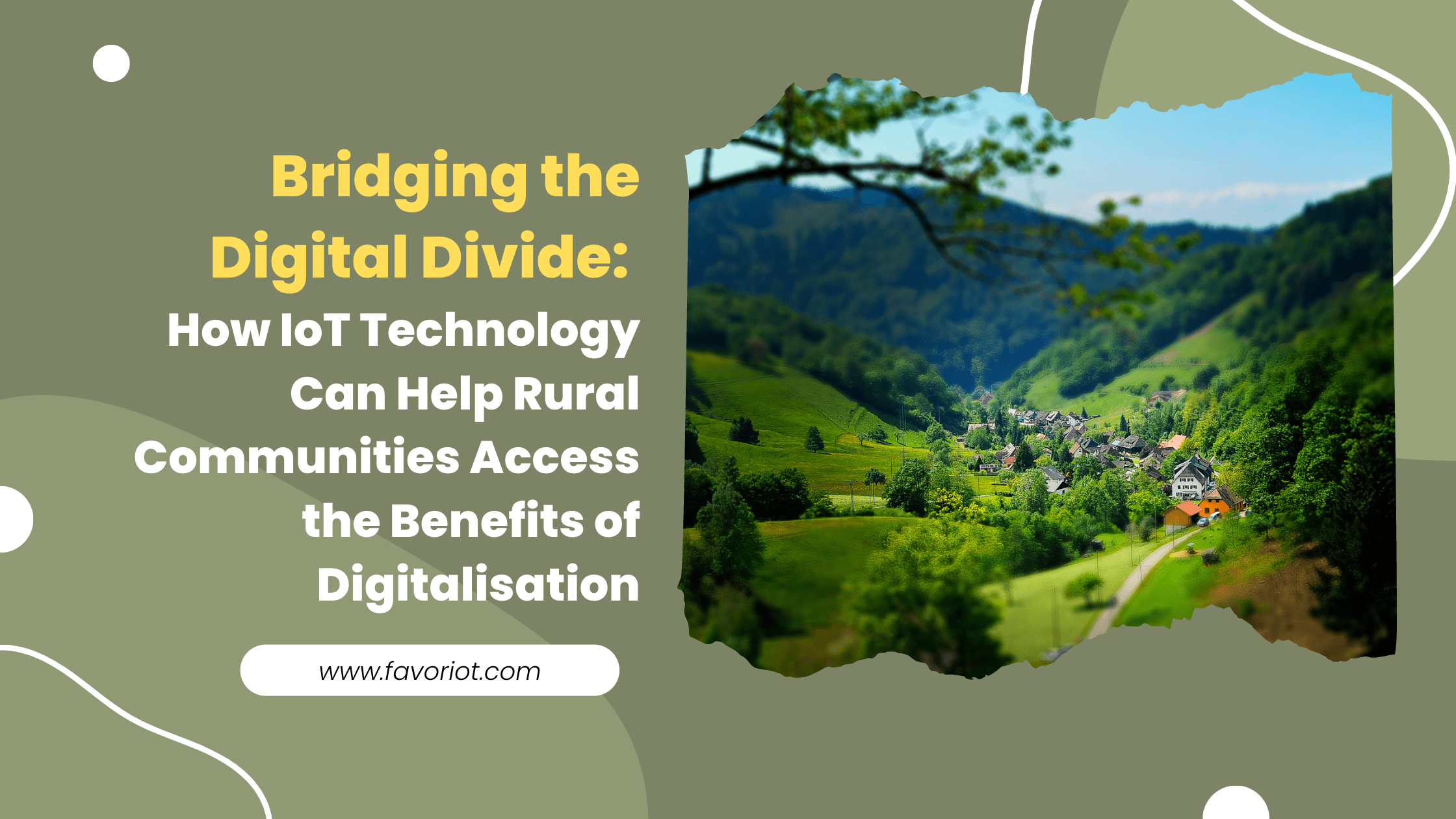The world is witnessing a massive shift toward digitalization, which has brought about significant disruptions in many industries. While these advancements have created new jobs and opportunities, they have rendered some jobs obsolete. Digitalisation has impacted various sectors, from manufacturing and retail to healthcare and finance.
The Importance of Internet Access in Rural Areas
Despite progress in the digital world, many rural communities are still left behind due to the lack of Internet access. The digital divide between urban and rural areas has widened, exacerbating economic inequality. The inability to access the benefits and opportunities of technological advancements has left many rural communities disadvantaged, making it difficult for them to compete with urban areas.
One significant challenge faced by rural communities is the agriculture sector. Traditional agriculture is left behind without digital technology in a world where crop yields can be optimized using IoT devices. While the lack of internet access in rural areas presents significant obstacles to adopting digital methods, the increasing availability of Internet coverage makes it more possible.
Digitalisation’s Impact on Industries
Digitalisation has brought about significant changes in various industries. A critical impact of this trend is the rise of automation, which has increased efficiency and productivity in many sectors. However, it has also led to job losses, as automation reduces the need for manual labor.
The retail industry has been significantly impacted by digitalization. With the rise of e-commerce, many brick-and-mortar stores have closed down, resulting in job losses. However, the growth of e-commerce has also created new opportunities for jobs in areas such as software development and digital marketing. These new jobs require different skill sets, such as programming and data analysis, and offer opportunities for people to learn and develop new skills.
The Internet’s Impact on Rural Communities
The lack of internet access in rural areas has left many businesses and individuals unable to access the benefits of digitalization, such as e-commerce and telemedicine. Rural communities struggle to keep up with urban areas, and the digital divide between these regions is widening. However, the increasing availability of Internet coverage creates new opportunities for businesses in rural areas to embrace digitalization and access new markets.
IoT technology offers new opportunities to bridge the digital divide in rural areas. This technology refers to a network of interconnected devices that can communicate with each other and share data. In agriculture, IoT technology can monitor soil moisture levels, temperature, and other factors affecting crop growth. This data can be used to optimize irrigation schedules and reduce water usage, resulting in increased crop yields and reduced costs.
In healthcare, IoT technology can monitor patients remotely, allowing doctors and nurses to provide care without needing in-person visits. This is especially important in rural areas where access to healthcare is limited.
Embracing Change to Stay Competitive
In today’s fast-paced world, being open to new ideas and embracing innovation is crucial. Our world is highly competitive, and those who are slow to adapt to change will be left behind. Embracing change requires taking risks and being willing to learn new skills. However, those who embrace change will reap the rewards of a more innovative and efficient business.
Governments, businesses, and individuals must work together to ensure everyone has access to the benefits of digitalization and the Internet, regardless of where they live. We can create a more equitable and prosperous world for everyone by bridging the digital divide.
Conclusion
In conclusion, digitalization and the Internet have significantly impacted various industries, creating new jobs while rendering some obsolete. The lack of Internet access in rural areas has widened the digital divide, making it challenging for rural communities to access the benefits of digitalization. However, the increasing availability of Internet coverage creates new opportunities for businesses in rural areas to embrace digitalization and access new markets. Bridging the digital divide in rural areas is crucial to ensure everyone has access to the benefits of digitalization and the Internet, regardless of location. This requires a concerted effort from governments, businesses, and individuals to improve Internet coverage and provide access to new technologies, such as IoT.
IoT technology offers new opportunities to improve efficiency and productivity in various industries, from agriculture to healthcare. Embracing change and new technologies is necessary to stay competitive in today’s fast-paced world. Governments, businesses, and individuals must work together to ensure everyone can access the benefits of digitalization and the Internet, regardless of where they live. We can create a more equitable and prosperous world for everyone by bridging the digital divide.


1 thought on “Bridging the Digital Divide: How IoT Technology Can Help Rural Communities Access the Benefits of Digitalisation”